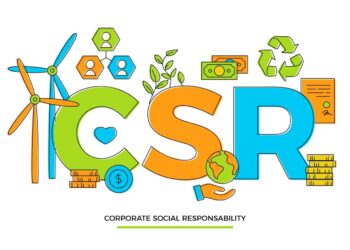India’s educational system has long since needed an urgent review to meet the growing demand for quality, contemporary andhigh-tech system,accessible to more children across the country. If we look at the UN Sustainable Development Goals and the Right to Education Act 2010, SDG 4 promises to achieve inclusive and equitable quality education and promote lifelong learning opportunities for all, and the RTE Act provides for the right of children to free and compulsory education till completion of elementary education in a neighbourhood school. There is, therefore, a need for a mechanism that addresses the current challenges of shortage of teachers, access to quality schools, lack of creative educational material and the inability of numerous children to go to school due to various factors.
At the same time, children and youth in India have, in the last decade, become increasingly technology-driven, revealing considerable potential and readiness to imbibe and learn through digital media. School drop-out sand those who have opted out of formal learning in order to support their families would also benefit enormously from a system that’s accessible through online portals and smart platforms. A digitally literate India isn’t only a dream nurtured by our policymakers but also every citizen of the country.
The Government of India under its ambitious Digital India Campaign has envisioned an umbrella programme to transform India into an empowered society and knowledge economy. It actively seeks to provide high-tech education using technology such as smartphones, apps and Internet services. These can be powerful mediums of knowledge, cultural exchange and a broader world view in far-flung areas where no schools exist, there is a paucity of teachers and lack of quality learning material.
With the Finance Minister announcing a gradual shift in learning from ‘black board’ to ‘digital board’ in Budget 2018, there is great potential for civil society and corporates with CSR initiatives to build this into their various programmes. There is a need for participation from a number of stakeholders who are required to come together and revive our education sector. Nonprofit organizations and tech companies can take the lead and help enable a strong ecosystem by providing innovative pedagogy, user-friendly educational devices and creative content. Smart classrooms are a critical part of taking this concept forward.
A case in point is Smile Foundation’s Digital Literacy Project for underprivileged children under its Mission Education Programme. It has adopted out-of-the-box methodologies to assess and enhance the current classroom settings to make learning effective, engaging, and fun. These include a small library cum language spaces, where teaching methods are customized as per the language and skill sets of children, as well as workshops integrating multiple arts where students voice and express their thoughts about community strengths through theater, visual arts and narratives.
In conclusion, it is important to reiterate that, through a comprehensive and widespread digital platform, children and youth from all sections of society, especially rural settings, can strengthen their access to technology and use it for gaining knowledge and gaining additional skills leading to greater learning outcomes.
About the Author: Santanu Mishra is the Co- Founder and Executive Trustee at Smile Foundation. He looks after operations, planning and strategy of the organization, is reaching out to more than 600,000 underprivileged children, youth and women directly every year through more than 250 live welfare projects on subjects such as education, healthcare, youth employability, and women empowerment across 25 states of India. Adopting a life cycle approach of development, Smile Foundation focuses its interventions on children, their families and the community.
Disclaimer: Views expressed in this feature are entirely their own and does not necessarily reflect the views of India CSR Network and its Editor.
Copy Right/Conditions: India CSR Network does not permit other websites/agency to copy or reproduce or reprint the above article in any form/means.





















